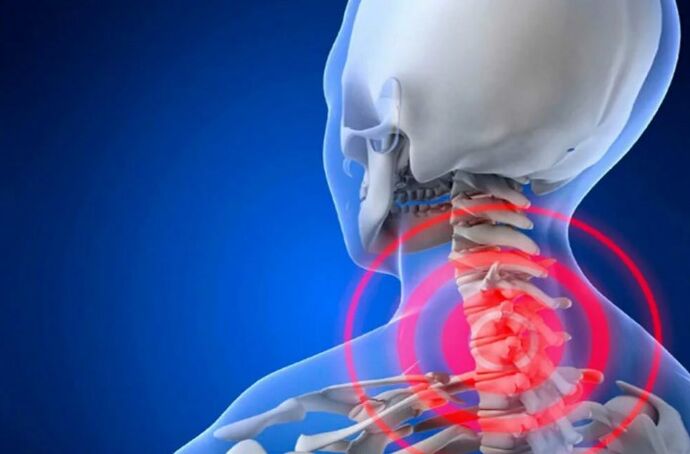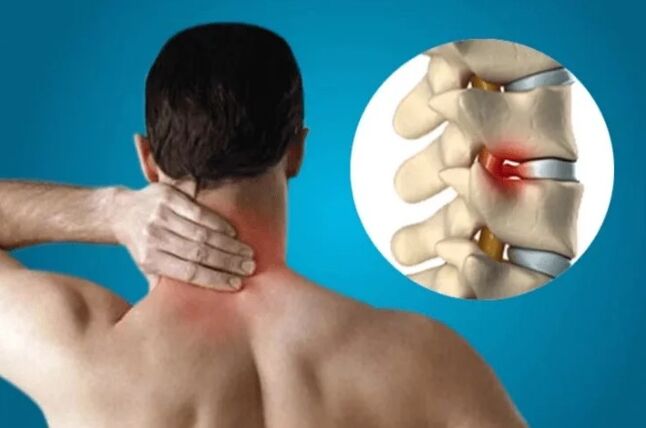Cervical spinal osteochondrosis occurs due to pathological changes in the intervertebral disc. They weaken, become thinner, lose elasticity, stop protecting the vertebra from damage and loss of ability to give them sufficient mobility. The main danger of cervical osteochondrosis is that the disease affects the nerve endings of the spinal cord, where there is a violation of blood supply to the brain.

Type and classification
Some stages of cervical spinal osteochondrosis are distinguished:
- First: Early changes in intervertebral disc cartilage;
- Second: the onset of disc thinning, a decrease in distance between vertebrae;
- Third: disc destruction, the onset of spinal deformation;
- Fourth: Strong deformation of the spine.
Cause
The main cause of cervical osteochondrosis lies in the spinal structure of this area. All vertebrae here fits each other tightly and easily switches even with small loads.
Given how mobile the cervical region is, it is not surprising that the disease is so widespread.
Trigger the onset of the disease:
- Features of congenital anatomy (in people with long neck, osteochondrosis occurs more frequently);
- violations of mineral deterioration;
- hormone deviation;
- adequate muscle corset deficiency in the neck and shoulders;
- hypodynamia;
- cervical injury;
- hypothermia;
- posture disruption;
- Overweight.

Symptom
- Often the first symptoms of cervical osteochondrosis are headaches. It can be very strong, flowing like migraines, accompanied by dizziness and crazy homes.
- The appearance of "flies", dark spots, clouds in front of the eyes, and decrease in vision are characteristic.
- The pain in the neck with the disease gives the back of the head, forehead, ear, it increases as the head position changes.
- Hands are often observed.
- There is sound in the ear, hearing loss.
- Violation of movement coordination, fainting may occur.
Diagnostics
To identify cervical spinal osteochondrosis, they run:
- Radiographs that determine the state of the vertebra;
- Calculated tomography, to identify disc damage;
- Dopplerography that causes blood flow disorders;
- Duplex scanning indicates the condition of the blood vessels.
Treatment
As an ambulance for cervical osteochondrosis, painkillers and anti -anti -anti -anti -medications are required. Depending on the strength of the pain syndrome, local drugs (ointment and gel), tablets or injections are used.

Also appointed:
- vitamin therapy (vitamin group B);
- a drug that relieves muscle cramps,
- Chondroprotector;
- physiotherapy procedures (electrophoresis, paraffin, magnetotherapy and other);
- medical gymnastics;
- Massage and yourself.






















